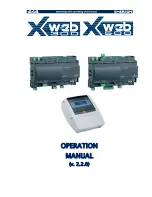
v
No:
Install
the
first
L3
Cache
Module
(M03,
M04,
M09,
M10)
(M12,
M13,
M05,
M06)
(M22,
M23,
M28,
M29)
(M26,
M27,
M19,
M20),
working
v
top
to
bottom.
Then,
continue
with
L3
cache
testing,
procedure
2
(See
page
L3
cache
shorts
test,
procedure
2
1.
Choose
from
the
following
options:
v
If
you
are
using
the
new
capacitor
book
option:
Connect
the
meter
″
V
″
to
Capacitor
book
TP-3
(L3-L)
and
Meter
″
COM
″
to
Capacitor
book
TP-5
(RTN).
v
If
you
are
using
the
short-circuit
test
tool
option:
Connect
the
meter
″
V
″
to
test
card
1.9V
L3
LGA
(blue
jack).
Meter
COM
to
test
card,
either
″
COMMON
RET
(black
jack).
2.
Record
resistance,
call
this
resistance
″
1.9v
L3
total
resistance
″
1.9v
L3TR.
3.
Enter
recorded
fail
criteria
*,
MLR,
1.9
vL3TR
in
the
equation:
1.9vL3TR
-
MLR
>
Fail
criteria.
4.
Is
the
left
side
of
the
equation
greater
than
the
right
side?
v
No:
Continue
with
the
next
step.
v
Yes:
Is
the
left
side
of
the
equation
greater
than
1
Ohm?
–
Yes:
Go
to
L3
cache
testing,
procedure
3
(See
page
–
No:
Contact
your
next
level
of
support.
This
ends
the
procedure.
5.
Has
this
L3
been
remove
and
reinstalled?
v
No:
Remove
the
L3
cache
module,
and
inspect
the
interposer
for
shorts.
Continue
with
the
next
step.
v
Yes:
Go
to
step
7
(See
page
6.
Are
shorts
visible?
v
No:
Reinstall
the
L3
cache
module
and
go
to
step
2.
v
Yes:
Reject
the
L3
cache
module,
install
another
L3
cache
module
(M03,
M04,
M09,
M10)
(M12,
M13,
M05,
M06)
(M22,
M23,
M28,
M29)
(M26,
M27,
M19,
M20).
Then,
go
to
step
2
(See
page
7.
Are
all
the
memory
and
network
interface
controller
(NIC)
cards
disengaged?
v
Yes:
Reject
the
L3
cache
module,
install
another
L3
cache
module
(M03,
M04,
M09,
M10)
(M12,
M13,
M05,
M06)
(M22,
M23,
M28,
M29)
(M26,
M27,
M19,
M20).
Then,
go
to
step
2
(See
page
v
No:
Are
all
the
memory
disengaged?
–
Yes:
Disengage
one
network
interface
controller
(NIC)
card
(primary
NIC
card
first,
secondary
NIC
cards
second),
then
go
to
step
2
(See
page
–
No:
Disengage
a
memory
book
(memory
are
removed
one
at
a
time.
Then,
go
to
step
2
(See
page
L3
cache
shorts
test,
procedure
3
1.
Choose
from
the
following
options:
v
If
you
are
using
the
new
capacitor
book
option:
Connect
the
meter
″
V
″
to
Capacitor
book
TP-4
(L3-D)
and
Meter
″
COM
″
to
Capacitor
book
TP-5
(RTN).
v
If
you
are
using
the
short-circuit
test
tool
option:
Connect
meter
V
to
test
card
1.5v
L3
LGA
(white
jack),
and
meter
COM
to
test
card
either
COMMON
RET
(black
jack).
2.
Record
resistance,
calling
it
1.5v
L3
total
resistance
(1.5vL3TR).
3.
Enter
recorded
fail
criteria
*,
MLR,
1.5vL3TR
in
the
equation:
1.5vL3TR
-
MLR
>
Fail
criteria.
4.
Is
the
left
side
of
the
equation
greater
than
the
right
side?
v
No:
Continue
with
step
7
(See
page
v
Yes:
Is
the
left
side
of
the
equation
greater
than
1
Ohm?
–
Yes:
Go
to
L3
cache
testing,
procedure
4
(See
page
–
No:
Continue
with
the
next
step.
Analyze
hardware
problems
129
Summary of Contents for 270
Page 2: ......
Page 12: ...x Hardware Remove and Replace Part Locations and Listings...
Page 279: ...Figure 3 CCIN 2881 with pluggable DIMM Analyze hardware problems 267...
Page 281: ...Figure 6 Models 830 SB2 with FC 9074 HSL and SPCN locations Analyze hardware problems 269...
Page 283: ...Figure 1b Model 840 SB3 processor tower dual line cord Analyze hardware problems 271...
Page 294: ...01 gif port and LED locations 282 Hardware Remove and Replace Part Locations and Listings...
Page 295: ...s src rzaq4519 gif locations Analyze hardware problems 283...
Page 483: ...Table 1 Cover assembly FC 5095 Expansion I O Tower Analyze hardware problems 471...
Page 614: ...602 Hardware Remove and Replace Part Locations and Listings...
Page 618: ...606 Hardware Remove and Replace Part Locations and Listings...
Page 621: ......
Page 622: ...Printed in USA SY44 5917 02...















































